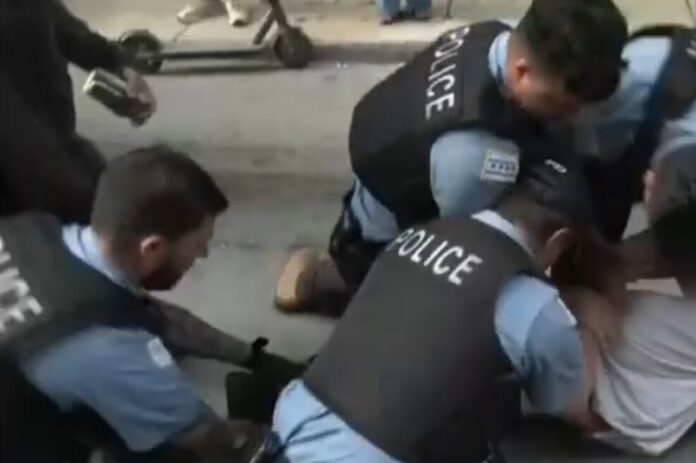Demonstrations erupt nationwide as Trump intensifies immigration raids and deploys troops
The United States convulsed in fury on Tuesday as protests ignited across the country, fuelled by the Trump administration’s latest immigration crackdown. What began as targeted raids in Los Angeles swiftly spread into a wave of demonstrations from coast to coast.
In New York City, thousands swarmed Foley Square, denouncing the Immigration and Customs Enforcement (ICE) raids that have swept across workplaces and communities. Protesters hoisted signs reading “Ice out of New York” while others chanted, “Why are you in riot gear? I don’t see a riot here.”
Shirley, a 29-year-old protester draped in a large Mexican flag, voiced her anger at the administration’s focus on immigrant labourers. “I come from immigrant parents,” she said. “It’s infuriating to see this government taking people from construction sites, factories, farms — they’re targeting the backbone of this country. The United States is a nation of immigrants, and I’m here for those who can’t be.”
Brooklyn Councilmember Shahana Hanif took to the stage, fiercely criticising both President Trump and New York Mayor Eric Adams. “Mayor Adams has made it clear that he doesn’t care about working-class people. He is collaborating with Trump. He’s complicit,” she declared to loud cheers. She pledged to defend New York’s status as a sanctuary city and called for stronger protections for international students, shouting, “Stop the attacks and assaults on our students!”
The protests extended far beyond New York. In Chicago, thousands gathered outside an immigration court before marching through downtown, banging drums and chanting, “No more deportations!” Tensions flared when a vehicle ploughed dangerously close to marchers. WGN TV News captured footage of the near-miss, heightening fears amid the already volatile atmosphere.
Metro Atlanta saw hundreds marching along Buford Highway, standing in solidarity with those affected in Los Angeles. In Omaha, anger boiled over after 80 people were reportedly arrested during a raid on a local meat-packing plant. Protesters filled the streets, chanting “Chinga la migra” — a defiant Spanish slogan seen emblazoned on placards throughout the march.
Seattle, too, saw its share of demonstrations. About 50 protesters gathered outside the Henry M Jackson federal building downtown. After their rally, they barricaded driveways with e-bikes and e-scooters, blocking Homeland Security vehicles thought to be carrying detained immigrants.
The backlash didn’t stop there. Large rallies erupted in Dallas and Austin on Monday, while nationwide organisers have planned as many as 1,800 additional protests for Saturday. The timing is deliberate, set to coincide with the grand military parade President Trump is staging in Washington, DC for his birthday.
As the protests swell, the Trump administration remains defiant. ICE officials insist their actions target undocumented immigrants with prior deportation orders, while critics argue that the raids indiscriminately tear families apart and destabilise communities.
The federal government’s deployment of troops to assist with these immigration operations has only intensified public outrage. Images of National Guard units stationed outside federal buildings, such as Los Angeles’ Edward R Roybal Centre, have further stoked tensions, drawing sharp comparisons to martial law tactics.
Many now view this aggressive crackdown as not just an attack on undocumented immigrants, but a direct assault on America’s identity as a nation built by immigrants. Protesters nationwide are vowing to continue their resistance, demanding an end to the raids, mass detentions, and what they see as a calculated campaign of fear.
With more demonstrations looming, the United States stands at a volatile crossroads — its cities choked with anger, its communities divided, and its streets echoing with the chants of defiance against an immigration policy that has become a lightning rod for national dissent.
